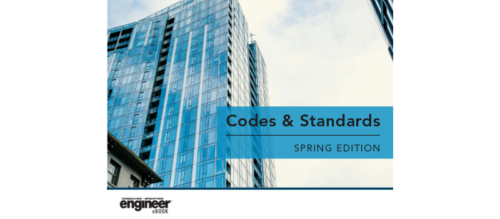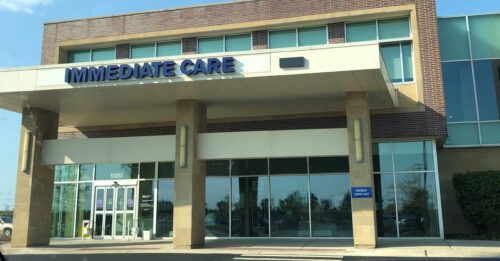Letters – 2008-10-01
Letters to the editor
More on the ‘green fad’
I read the letter by Kevin Dickens, “When the green fad fades,” August 2008 (page 8), with interest. It carries a message of frustration with the current fad of green design and its influence on mechanical and electrical engineers. I am one who thinks that the green or sustainable practice is the only recipe for future energy and economic stability. If we have carefully selected the optimal system, right-sized it, selected efficient equipment, and used advanced controls, we truly have done all we can.
What I find myself doing is campaigning for a very efficient building envelope as the way to get those LEED Energy and Atmosphere credits. In the end, the architect holds the key to significant energy savings. The green movement is really an awakening to a different paradigm in architecture and, to some extent, mechanical design practice. All of the energy modeling is a pain to do, but it should be a confirmation of what we did anyway.
Good design practice will not go out of style, but it may get a revision as technology advances our toolset.
I believe we have an obligation to be proactive about identifying the source of permanent energy conservation, i.e., the building envelope. Once an efficient design is installed, making sure it runs as intended is the other ingredient.
Stephen A. Ricks , PE, LEED AP, Senior Project Manager, Coffman Engineers Inc., Seattle
California’s green code
I have to express disagreement with the statement “the development of state-by-state codes, instead of a national policy, will hinder the overall process of developing more green buildings” from the Consulting-Specifying Engineer news story, “First statewide green building code released,” August 2008 (page 16). This is patently false, and disregards the need for any green code to fit the locality, the state, and the region. Just because architects deal planet-wide, does not mean that those who seek optimums for their locality have to. In fact, the disparities between climatic and other conditions in different parts of the lower 48 are extensive.
Finally, the statement totally disregards the utter failure of national level policy and codes in the United States over the past 40 years to do anything substantive about climate change. We should thank the Californians for going ahead because waiting for a national level code is not practical.
Frankly, the National Assn. of Home Builders is not the place to look for green buildings. They have not pioneered anything in that area. Meanwhile, the solar and other energy pioneers have been on their own for quite some time.
Dave Thomas , MSCE, PE, Fairfax, VA
Energy woes ahead
If you look at the numbers, you will quickly grasp the fact that we cannot conserve our way out of our energy situation. What is even sadder is the fact that we have known about what must occur to alleviate this problem for more than 50 years. Our lack of proper action has traditionally given way to those looking for an easier solution. We have reached the point where to not act will have unacceptable consequences and to act is beyond the scope of our current way of doing things. Reality is not going to change, so I would suggest we need to get a grasp on the scale of what must happen. We have yet to begin, and we should have done so long ago.
Hugh Coleman , Kelso, Wash.
Fax this!
I really enjoyed reading the Consulting-Specifying Engineer article “Can’t you just fax it to me?” August 2008 (page 45), and the topics it touched on. Back when CAD drawings began to be fashionable, I was involved in supplying engines to a wide range of customers. Many of the engineers were comfortable simply receiving a paper drawing of a new model they would be working with. At the time, this was sufficient to begin to formulate a new design in their head. Having all this information on a single document was equivalent to putting an actual product in their hands. In fact, some of the engineers would order a new engine, set it on their shop floor, and just from a walk-around, begin to visualize how the whole package might come together.
It was interesting when we started receiving requests for CAD information from the younger engineers. The younger generation of engineers would do all these processes strictly on their computer, and even though they were not working with tangible materials, they would still create successful, new products. Author Joel Orr touches on the fact that engineers need to know how and why the results make sense, instead of implicitly trusting the computer.
Over the years, I believe that I’ve developed a feeling for the numbers I’ve worked with. Along with an intuition as to whether something just feels right, this has come from working with something tangible. I have often wondered how someone working solely on a computer could develop these important and necessary skills. Perhaps I am not too old to begin to understand how young engineers can do it all from a computer.
John Fischer , Engine Consultant, Palatine, Ill.
Cable selection
In reference to your article, “Choosing the right communication cable,” July 2008 (page 61), let’s not overlook ANSI/TIA/EIA-862, “Building Automation Systems Cabling Standard for Commercial Buildings.” Building automation encompasses control systems, such as security and monitoring, safety systems such as fire alarm, environmental conditioning systems such as HVAC, and energy management systems such as internal and external lighting. ANSI/TIA/EIA-862 specifies generic cabling topology, architecture, design, installation practices, test procedures, and coverage areas to support BAS used in commercial buildings.
Historically, providers of these building automation services specified their own proprietary equipment, cables, interface connections, and topology. This new standard offers the distinct advantage of being able to support multi-product and multi-vendor environments using one generic structured cabling system. It is important to note that other low-voltage systems, such as audio/video paging, service/equipment alarms, non-voice/data communications, and wireless access points, are also supported by the telecommunications cabling infrastructure requirements of this standard.
ANSI/TIA/EIA 862 is very similar to the ANSI/TIA/EIA 568-B and 569-A standards for voice and data communications. The subcommittee tried to follow the 568 standard with the goal of using the same media and terminology as 568-B, which provides the benefit of a common platform for BAS cabling. Since many BAS are turning toward an Ethernet protocol, its topology is specified in the 568 document. ANSI/TIA/EIA 862 is different in some important respects because it defines coverage area served by a BAS device. The coverage area (CA) description for BAS is similar to the work area (WA) description for voice/data cabling in ANSI/TIA/EIA 568. With the CA referring to the space served by one BAS device. For example, this could define the field of view of a security camera or the area in which a thermostat can sense temperature changes. The size of this coverage area is typically about 269 sq ft, based on average values from a study of floor lighting systems, security, and HVAC applications.
The ANSI/TIA/EIA 862 Standard also defines a modified star topology for horizontal and backbone cabling that support known BAS application requirements. This topology essentially allows a chain from one cabled device to another, with the standard defining key elements of the horizontal cabling link, including the horizontal crossconnect (HC), horizontal cable, horizontal connection point (HCP), and an optional BAS outlet/connector.
Paul Schoonover , RCDD, Glumac, Portland, Ore.
Author responds
You have provided excellent information on the ANSI/TIA/EIA-862 standard. There are definitely some parallels in the BAS Standard and the Commercial Cabling Standard.
Timothy Kuhlman , PE, RCDD, Electrical Engineer and Telecommunications Specialist, CH2M HILL, Portland, Ore.
September M/E Roundtable correction
In the September 2008 issue of Consulting-Specifying Engineer , in the M/E Roundtable “Cooking up ventilation” (page 14), we neglected to include participant Brian Rivet’s company name. Rivet’s company is Greenheck Fan Corp., Schofield, Wis.
Letters
Send your letters to Michael Ivanovich, editor-in-chief, Consulting-Specifying Engineer , 2000 Clearwater Drive, Oak Brook, IL 60523, or via e-mail tomichael.ivanovich@reedbusiness.com.
Letters should be no longer than 200 words, and may be edited for space, style, spelling, and grammar.
Do you have experience and expertise with the topics mentioned in this content? You should consider contributing to our CFE Media editorial team and getting the recognition you and your company deserve. Click here to start this process.



